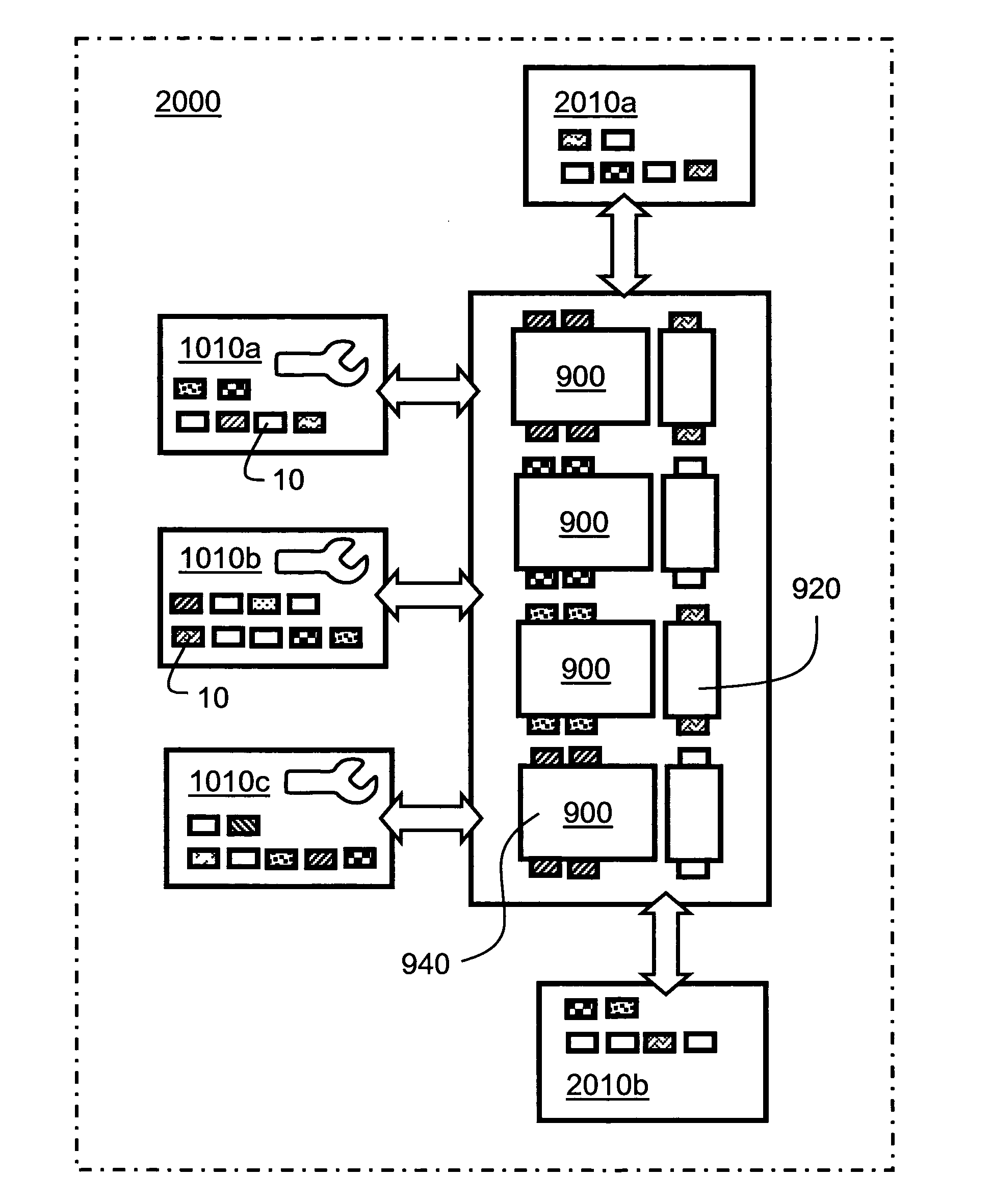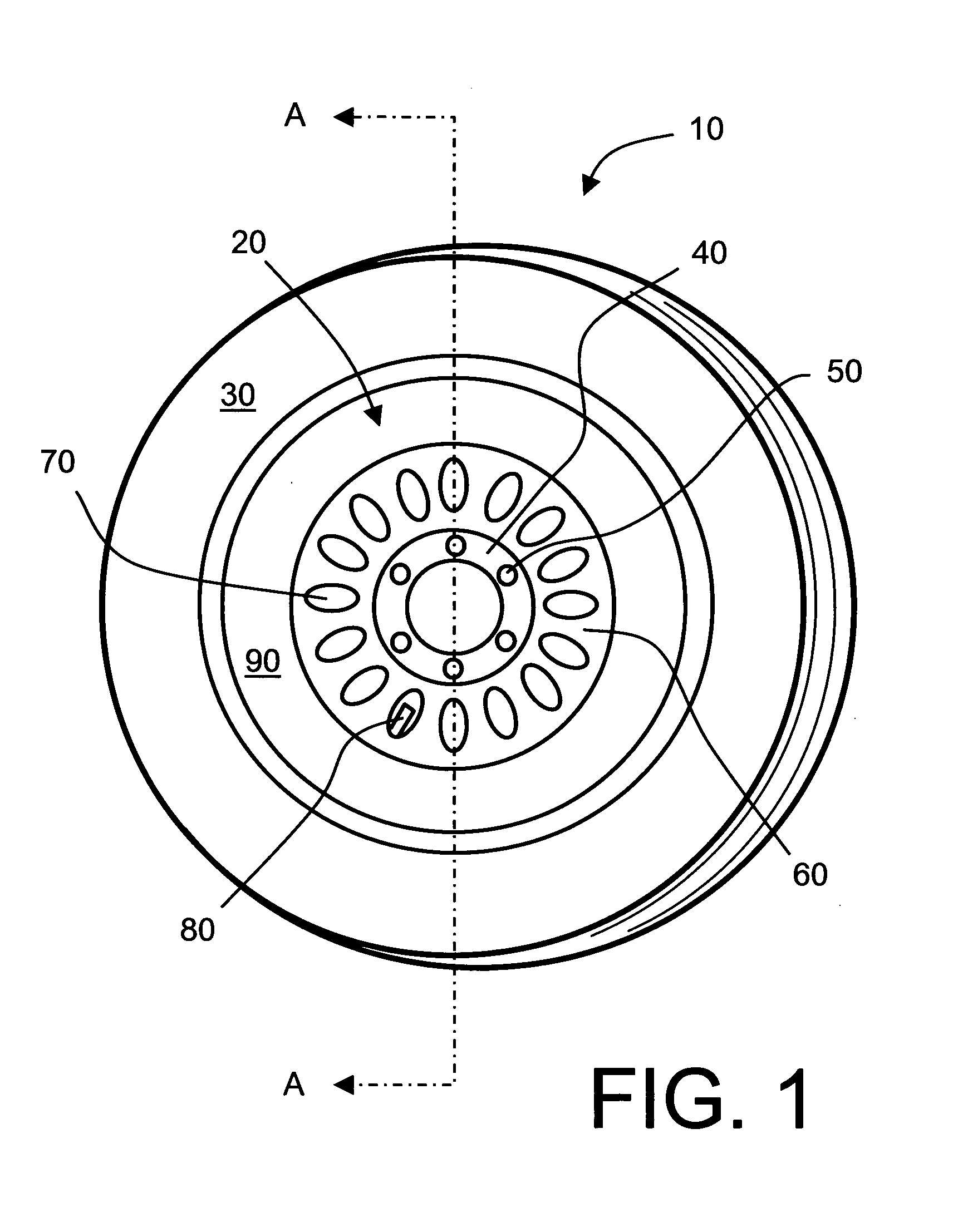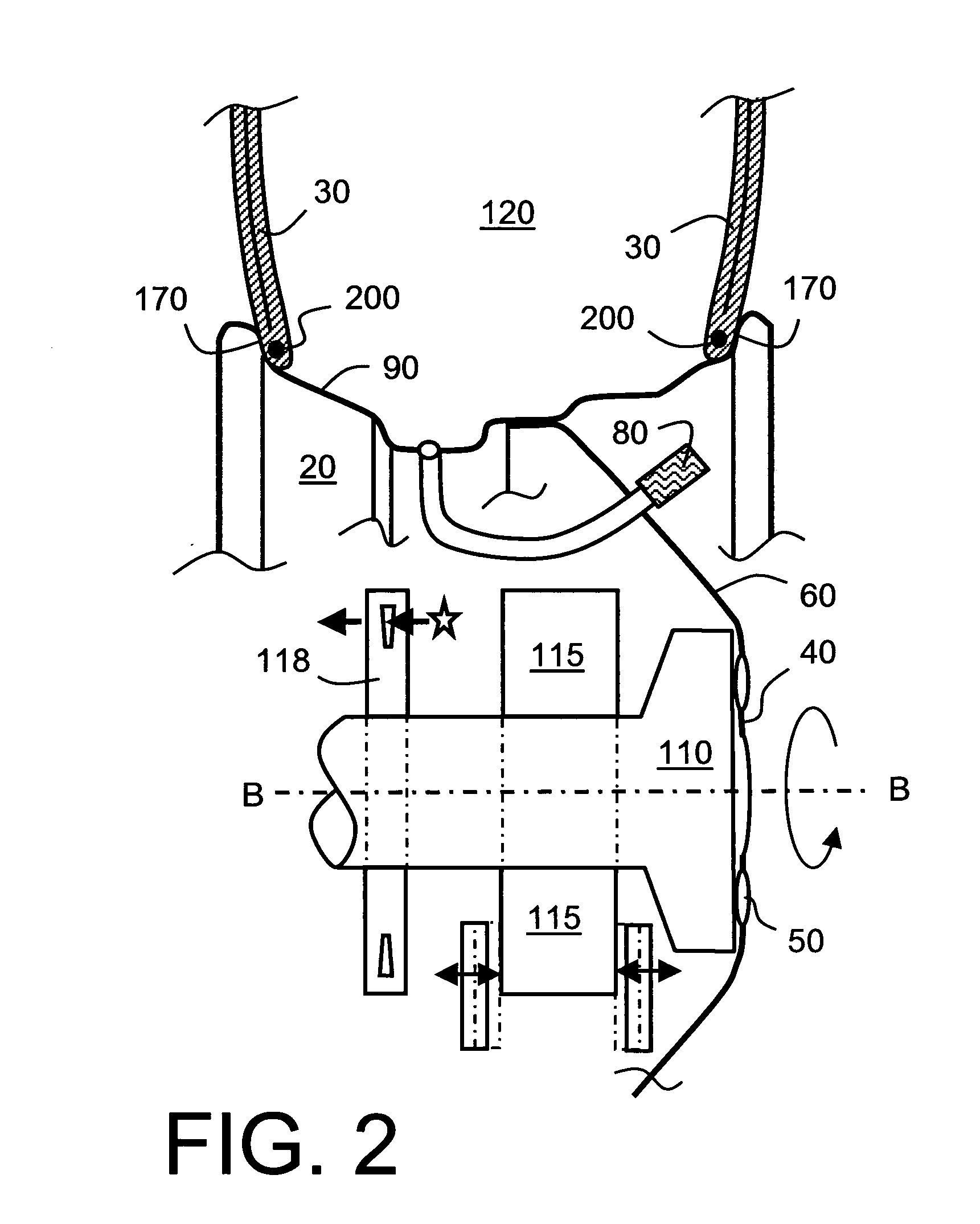Method of identifying positions of wheel modules
- Summary
- Abstract
- Description
- Claims
- Application Information
AI Technical Summary
Benefits of technology
Problems solved by technology
Method used
Image
Examples
second embodiment
[0296]When operating the vehicle and a method is performed, the following procedure may be used:
[0297]The driver 910 inputs to the electronic control unit (ECU) 950, for example by depressing a suitable switch, key or button on the console 915, that the driver 910 is desirous to invoke the “calibrating” according to the second embodiment of identifying locations of the modules 400 on the vehicle 900, namely “calibrating” the vehicle 900. The driver 910 then drives the vehicle 900 for a short distance in a straight direction so that the pressure level in each tire P1, . . . PN may be recorded. The driver 910 then turns a steering wheel of the vehicle 900 at the console 915 to pivot the front wheels 10al, 10ar to cause the vehicle 900 to execute the aforementioned right-turn from the positions Q1 to Q5 and then turns the steering wheel straighten the front wheels 10al, 10ar to cause the vehicle 900 to continue further in a straight trajectory after the position Q5. During the right-t...
third embodiment
[0298]In the invention the physical parameter is an angular velocity derived from a signal generated by said one or more modules (400). In this embodiment the method includes the steps of:[0299](b) driving said vehicle (900) around a curved trajectory as sensed by a steering sensing arrangement and recording direction of steering of said vehicle (900) together with a temporal record of said angular velocity determined from a signal generated by said one or more modules (400) together with their corresponding identification codes (ID); and[0300](c) applying an analysis to said direction of steering and said temporal record in respect of time (t) to identify locations whereat said one or more modules (400) are located on said at least one wheel (10) of said vehicle (900), said analysis utilizing a characteristic that the angular velocity of a wheel located on an outside of said curved trajectory will experience greater magnitude during the curved trajectory in comparison to a the magn...
first embodiment
[0303]Once the vehicle starts to turn, the wheels on the outside in the curve will follow a longer route than wheels on the inside in a curve, which enables a computer to separate the signals from modules located on the left and right side of the vehicle when the direction of the curve is known. Furthermore, as have been explained before in relation to the invention, when entering a curve, the front axle will be start turning first followed by the wheels on the middle axle (if one is present) and the rear axle.
[0304]In FIG. 10c the angular position of the wheels as a function of time is shown. At first all wheels travels at equal velocities. At the time t1 a first separation is made by the first axle outer wheel, which travels at an angular velocity which is higher than the all the other wheels due to the fact it follows a longer route. The signal generated by a module located at the front outer wheel will thus be characterised by a angular velocity ωar which is greater in magnitude...
PUM
 Login to View More
Login to View More Abstract
Description
Claims
Application Information
 Login to View More
Login to View More - R&D
- Intellectual Property
- Life Sciences
- Materials
- Tech Scout
- Unparalleled Data Quality
- Higher Quality Content
- 60% Fewer Hallucinations
Browse by: Latest US Patents, China's latest patents, Technical Efficacy Thesaurus, Application Domain, Technology Topic, Popular Technical Reports.
© 2025 PatSnap. All rights reserved.Legal|Privacy policy|Modern Slavery Act Transparency Statement|Sitemap|About US| Contact US: help@patsnap.com



